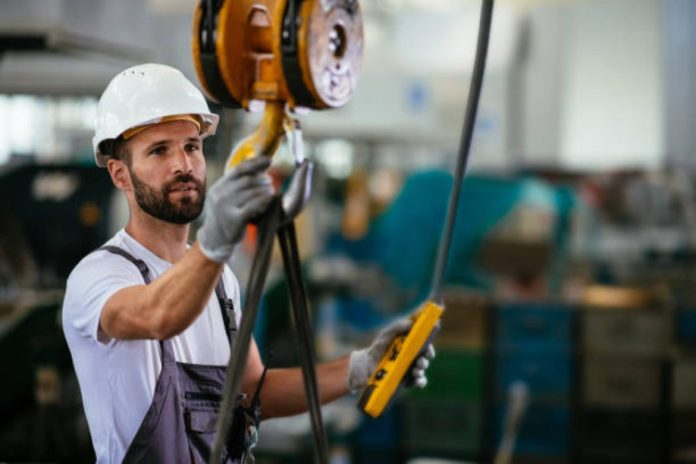From lifting heavy materials on a construction site to moving goods in a warehouse, using lifting equipment is a routine part of many industries. However, operating such equipment carries inherent risks, and workers must follow stringent safety protocols to avoid accidents or injuries.
So, whether you’re an experienced professional or new to the industry, this guide offers comprehensive safety tips to help you and your co-workers stay safe during lifting operations.
Ensure Proper Training
All on-site personnel who operate lifting equipment in Adelaide must obtain the necessary licences (such as a Licence to Perform High Risk Work). The validity of these licences can be checked online by anyone and must be renewed regularly.
To acquire these licences or add new classes, you must have received the proper training and pass an assessment from a Registered Training Organisation. Said training should cover everything from lifting operations for different types of machines to safety protocols and emergency procedures. Be sure to stay up-to-date with industry developments to keep your skills and knowledge sharp.
Know the Load Limits
It can be easy to select the wrong equipment or exceed its capacity when you’re in a hurry. Always double-check that the load you’re lifting falls well within your lifting equipment’s operational capacity, and ensure the weight is evenly distributed.Using a load chart can help you determine these limits accurately, but remember to factor in the weight of any attachments or other components.
Perform Pre-Use Inspections
Any lifting equipment in Adelaide needs to be inspected for signs of wear and tear before use. These signs can include frayed wires, broken hooks, malfunctioning controllers, and any other damages that could affect usability. Once you’ve confirmed everything is in good condition, document your inspection for future reference and accountability.
Establish Clear Communication
Good communication is crucial for safe lifting operations. Use standard hand signals or reliable devices like radios to ensure clear and consistent messages between the lift operator and the ground crew. Ensure all team members understand and consistently use these signals to prevent miscommunications and/or accidents.
Plan The Lift Carefully
Before using lifting equipment, it is critical to assess and plan the lift thoroughly. This includes the weight, dimensions, appropriate equipment and any additional support. You should also account for your surroundings and the path the load will take, ensuring it is obstacle-free and well-lit.
When lifting, be sure to follow these practices:
- Centre the Load: Position the hoist hook directly over the load’s centre of gravity to prevent swinging or slippage.
- Lift Slowly: Raise the load gradually and steadily to maintain control and avoid jerking.
- Avoid Obstructions: Ensure the path is clear of obstructions and people. If necessary, use tag lines to guide the load.
- Stay Focused: Operators should remain attentive and avoid distractions.
Maintain Safe Working Distances
Despite the obvious danger, workers may sometimes find themselves under loads while using lifting equipment in Adelaide. This is extremely dangerous as any malfunction may result in someone being hit by the load. Always maintain a safe distance from the load to ensure you’re not at risk.
Keep A Regular Maintenance Schedule
A strict maintenance schedule is vital for the safety and reliability of your lifting devices. Always follow the manufacturer’s guidelines for maintenance and keep a detailed record of all work done. Frequent maintenance of worn parts can prevent unexpected issues and keep operations running smoothly.
Follow The Latest Safety Regulations
Keeping up with the latest safety regulations and standards for lifting equipment in Australia is essential. Check with organisations such as Safe Work Australia for the most current guidelines, and always implement new rules as soon as possible to keep your operations safe and compliant.
Use Personal Protective Equipment (PPE)
Ensure everyone involved in lifting operations is appropriately equipped with the correct PPE. This includes hard hats, safety glasses, gloves, and steel-toed boots. For specific jobs, you might also need high-visibility vests (especially for night work) and hearing protection.
Monitor Weather Conditions
If you’re having an outdoor lifting operation, be aware that the weather can play a significant part in lifting safety. It is therefore crucial to stay updated with weather forecasts and be prepared to stop operations if necessary. Keep an eye on wet or slippery surfaces, as they can significantly affect stability and control during lifts.
Have An Emergency Plan
No matter how strict your safety measures are, accidents can still happen when using lifting equipment. As such, it is crucial to have a well-defined emergency plan in place to handle any situation quickly and effectively. Ensure all workers are familiar with the plan and regularly conduct drills to keep everyone well prepared.
Safety First – Your Guide to Safe Lifting Operations
By following these essential safety tips, you can minimise risks and ensure that lifting operations on construction sites run smoothly and safely. Always prioritise safety to protect your team, equipment, and project success. Stay informed, be prepared, and be sure to prioritise safety in all lifting operations.







